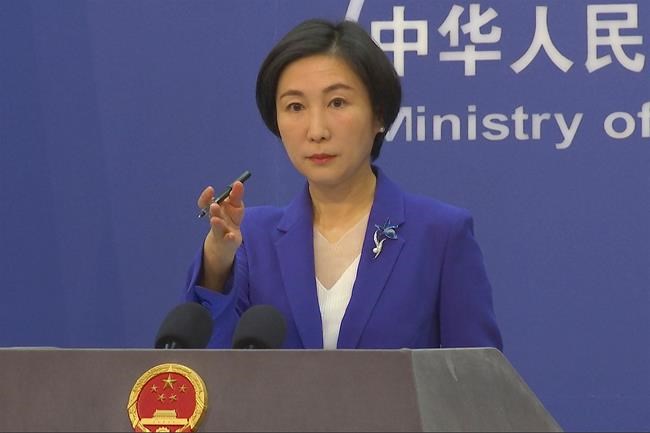UN Report: Over One Million Tibetan Children Suffering Separation Anxiety in Chinese Boarding Schools
Catering service for elementary schools in Lhasa
Students eat lunch at a Chinese elementary school in Lhasa, Tibet, March 11, 2022. Credit – Gongga Laisong – China News Service/Getty Images
Veiled by the Himalayas, on a frigid plateau twice the size of Texas, dubbed the “Roof of the World,” Tibet is truly a country unto itself. Tibetans share a lineage with Chinese, Mongolian, and Siberian peoples, but are characterized by a genetic mutation that allows them to thrive at over 13,000 feet above sea level, as well as a number of stark cultural differences, including their own language. religion and customs.
Traditionally, Tibetans rarely washed themselves, believing it to be bad for their health (perhaps with some justification in the freezing temperatures at high altitude). It is also a matriarchal society where women could freely choose to bear children with several different lovers. And Chinese customs like taking off your shoes at the door are completely foreign.
But an accelerated assimilation campaign by the ruling Chinese Communist Party threatens to completely wipe out Tibet’s unique way of life. The latest salvo was unveiled on Monday, as three UN experts warned about 1 million Tibetan children have been separated from their families and forcibly placed in Chinese state boarding schools as part of efforts to accommodate them “culturally, religiously and linguistically”. dominant culture of the Han Chinese.
The program involves placing children from rural communities in boarding schools, where classes are taught entirely in Mandarin Chinese, with little reference to Tibetan history, religion, much less the exiled spiritual leader, the Dalai Lama. The result is that many children forget their native language and find it difficult to communicate with their parents when they return home, which is usually only for a week or two each year. While the proportion of Chinese students in boarding schools nationwide is around 20%, the UN experts estimate that the vast majority of Tibetan children are being housed in large boarding schools after rural classrooms were systematically closed.
“The boarding school system for Tibetan children seems like a compulsory large-scale program aimed at integrating Tibetans into the Han majority culture, contrary to international human rights standards,” Fernand de Varennes, UN Special Rapporteur on Minority Issues; Farida Shaheed, Special Rapporteur on the Right to Education; and Alexandra Xanthaki, Special Rapporteur on Cultural Rights, in a joint statement.
It is the latest case of an ongoing cultural attack on China’s minorities — mainly Uyghurs, Tibetans and Mongolians — since strongman Xi Jinping took office in 2012. The most egregious example is the extrajudicial detention of up to 2 million Uyghurs and other Muslims in re-education camps in the western province of Xinjiang, which the UN describes as a “crime against humanity.”
Xi’s transformation
When Xi came to power, many hoped he would usher in a new era of religious and cultural tolerance. Xi’s mother, Qi Xin, practiced Tibetan Buddhism and his father, Xi Zhongxun, was a prominent reformer who pioneered the economic liberalization of China’s southern province of Guangdong and was considered a sympathizer with the Tibetan cause. (For decades, the elder Xi wore an Omega watch given to him by a young Dalai Lama.)
However, her child’s tenure at the head of China has brought no relief to Tibetans, who instead find their culture increasingly facing the prospect of total annihilation. While Tibetans have faced attacks of varying intensity since the People’s Liberation Army invaded in 1950, efforts have accelerated since a wave of anti-Chinese protests erupted in 2008 and a wave of gruesome self-immolations began a year later. Since then, Tibetans have been locked into working groups and nomadic communities, forced to settle in permanent settlements, with the activities of monks and believers severely restricted. In August 2018, an activist who simply organized Tibetan classes was sentenced to five years in prison for “inciting separatism”.
The assimilation campaign has increased as Xi has developed an ideological aggravation that embeds the CCP in all aspects of public and private life. In August 2021, China’s Central Conference on Ethnic Affairs called on all ethnic groups to put the interests of the Chinese nation above all else. “This call has reinforced the idea of building a modern and strong socialist state based on a unified Chinese national identity,” the UN experts say. “In this regard, initiatives to promote the Tibetan language and culture are reportedly being suppressed and individuals promoting Tibetan language and education are being persecuted.”
In contrast, the Chinese government insists that it does in fact protect ethnic culture, citing the new roads, railways and hospitals that have been built by state investment and have helped alleviate extreme poverty in Tibet. Indeed, today Han visitors flock to Tibetan temples in Lhasa and Xining, intoxicated by a heady religious zeal. But the official promotion of ethnic culture is ultimately reductive – a pastiche of folk dances and songs for the tourist crowds.
The threat from Tibet
Despite a pious population and the Lost Horizon Folklore, Tibet was never a pacifist utopia. Even after the introduction of Buddhism from India in the seventh century, the Tibetans were a warlike people, their highly skilled mounted warriors rampaging through Central Asia, sacking cities and exacting tribute from their yoked rivals. Shamans cast spells to wield their warriors’ swords and spears; Overwhelmed tribes were punished with the amputation of their noses, ears or hands.
Under Emperor Songtsen Gampo, whose Nepalese consort is credited with first bringing Buddhism to the frozen plateau, the Tibetans controlled an empire rivaling Genghis Khan and the Ottomans, and even sacked China’s Tang Dynasty capital, Chang, in 763 ‘an – today’s Xian. But the Tibetan Empire splintered into a jumble of fiefdoms from the mid-ninth century, and only merged into a strong, largely unified Tibet in 1642, when the current line of Dalai Lamas emerged. Even then, Tibet remained largely a vassal state of the dominant Mongol Empire. (The title of Dalai Lama, meaning “Lama from across the ocean,” is of Mongolian origin.)
While the CCP insists that the eastern part of the Tibetan Plateau was part of the Qing dynasty since the early 18th century, it conveniently conceals the fact that the Qing Manchus of northwestern China and were nominally Tibetan Buddhists. Few Tibetans at the time of the communist invasion had even seen a Han Chinese known colloquially as “Ngabgay,” or an event so catastrophic it defies description. Although China has held Tibet under its control at various points in history, according to the International Commission of Jurists, the area has enjoyed “de facto independence” since its last displacement in 1912.
That ended with the arrival of Red Chinese troops in 1950 and the Dalai Lama’s flight to India in 1959. Despite all the difficulties that ensued, Tibet has somehow retained its identity through decades of crushing deprivation. But the boarding school campaign threatens to make today’s Tibetans the last generation on the plateau to claim the name culturally.
“China’s communist regime believes that Tibetan culture, our distinctive language and religion, poses a threat to national security,” said Dorjee Tsetne, a member of the Tibetan Parliament in exile based in northern India. “China’s goal is nothing less than to completely erase Tibet’s national identity.”
Don’t miss interesting posts on Famousbio









